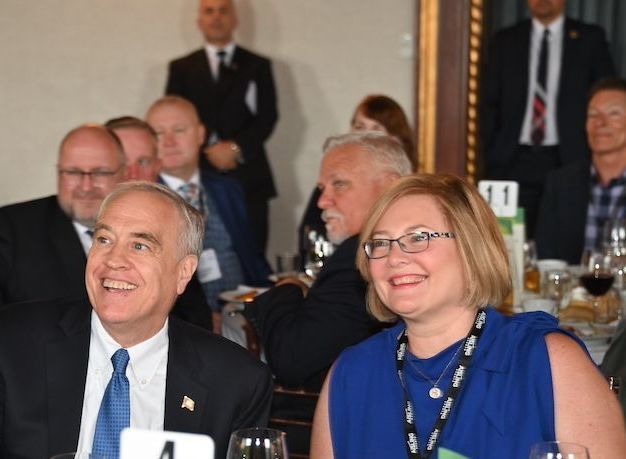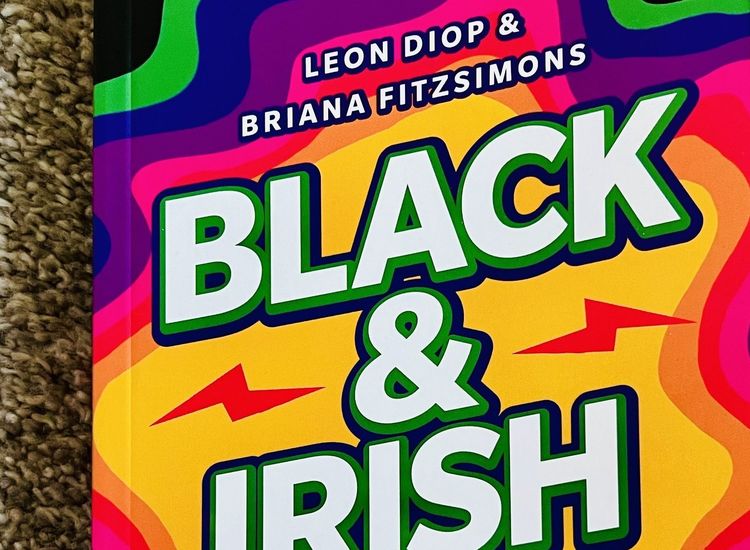Michael Gorman (1895-1970) was hugely influential in the London trad scene.
By Daniel Neely
Last Wednesday, many of Irish America’s most prominent artists took political action in the form of a streaming online concert called “Infinite Hope.” Organized by prominent singer, banjoist, and folklorist Mick Moloney, the event presented “Irish traditional musicians, singers and dancers performing in support of our Black and Brown brothers and sisters in their long struggle for social justice, human rights and freedom from oppression.”
It was an incredible show of support from a star-studded lineup that included (among many others) Liz Carroll, Karan Casey, Jimmy Crowley, Tony DeMarco, John Doyle, Seamus Egan, James Keane, Jimmy Keane, Joanie Madden, the McComiskey family, Robbie O’Connell, Niall O’Leary, John Roberts, Tommy Sands, and Athena Tergis. Artists were free to say what they wished, and many made heartfelt introspective statements that showed great compassion and a desire to do better. In his segments, Moloney spoke of bigotry, privilege, and Irish history, and closed with a fiery call to vote. Choreographer and historian Leni Sloan, Moloney’s longtime co-collaborator and the concert’s co-host, spoke to history and race from a different perspective that added context and depth to the concert’s overall message.
It was an important moment and I encourage readers to take the time to watch and listen. The archived concert can be seen here, but it’s also viewable on the Green Fields of America’s YouTube page. It was the first of several such concerts that Moloney has planned for the next few months.
In other news, it will come as no surprise for readers to learn that the 48th Scoil Samhraidh Willie Clancy (SSWC), or “Willie Week,” which takes place each year in Miltown Malbay, west Clare, was cancelled due to the pandemic. However, in collaboration with SSWC, the Irish Traditional Music Archive will make an effort to bring the Willie Week experience online in a three-pronged approach. As of last Wednesday and through to July 3, they will present daily recitals and concerts dating as far back as 1986 that feature the likes of Tommy Peoples, Noel Hill, and others; from July 4-12, it will present recitals, concerts, tribute events, and lectures from Willie Week 2019, scheduled to mirror last year’s program; and on July 18 they will air a tribute documentary to Scoil Samhraidh Willie Clancy, featuring archival audio and visual material.
https://youtu.be/PhTpJ-JFGBo
Of course, it is no substitute for the real thing, but this effort by SSWC and ITMA to keep it lit offers something positive for those who have been missing the music. Further details are available at itma.ie.
https://youtu.be/aB_7EpuhX-k
Speaking of “things archival,” I’ve been listening to an incredible two-disc set featuring the playing of Sligo fiddling legend Michael Gorman called “The Great Fiddle Player,” of which readers here should be aware. It’s largely comprised of non-commercial releases made in a variety of settings, like privately made acetates at home & in shops, and ones made “in the field,” and as such paint a multifaceted picture of a great musician who deserves to be more widely appreciated. It’s a must-have for fiddlers, but given Gorman’s sterling musicality, it should appeal to anyone who loves “pure drop” playing – if you’re looking for “it,” you need look no further.
Gorman was born in 1895 to Irish parents working in Scotland, but returned home in 1905 after the passing of his mother. His father and siblings settled in Doocastle on the Mayo/Sligo border and it was there that young Michael took up the fiddle and learned from James Gannon, a man who also happened to teach the great Michael Coleman. Gorman moved around quite a bit for seasonal work starting around 1910 – Scotland and England, mostly – and made his home in England more permanent after he married in 1916. Although he returned to Ireland for a brief period in later years, he made his relocation to England final just before World War II. From then on, he was a significant influence on London’s Irish music scene, up until his passing in 1970.
Gorman was a great player, but he was also an important teacher, and for years his house was an established meeting place for musicians. Among those he influenced one way or another include greats like John Vesey, Bobby Casey, Willie Clancy, Jimmy Power, Martin Byrnes, and Martin Wynne. But in 1953, he met the inimitable Margaret Barry and together they forged a very fine musical partnership that yielded several seminal albums that are remembered today.
The music on “The Great Fiddle Player” illustrates these diverse elements of Gorman’s musical life well. The “Geese in the Bog,” for example, is lovely. But it was recorded live in the Bedford Arms in Camden Town, so the energy here is lively and evocative, enhanced by the cash registers ringing in the background. Similarly, “Sligo Maid / Molloy’s,” both tunes Gorman would have learned directly from Gannon, were recorded with Margaret Barry’s accompaniment at the Cecil Sharp House in Camden Town. They’re rugged and beautifully done. “Down the Broom / The Pigeon on the Gate,” which was recorded as a custom private acetate in the late 40s/early 50s flashes a younger Gorman, bursting with energy.
The set also affords listeners opportunities to hear how Gorman’s music changed over time. For example, it includes two versions of Gorman’s infamous composition “The Mountain Road,” the two part original, and a later six part version. This six part version is prefaced with a wonderful interview segment of Gorman talking about how the tune got its name. It also includes two versions of “Doctor Gilbert,” one recorded c.late 40s/early 50s, and the other in 1968. The similarities and differences in tone and delivery between the two are fascinating.
A small number of other tracks are included here that give a sense of the milieu out of which Gorman came. For example, there are a couple of early commercial recordings of Peter Wyper, who was one of Gorman’s influences. There’s also a recording of his brother Martin singing “Highland Mary,” which is excellent and adds to the story.
“The Great Fiddle Player” reinforces Gorman’s genius. Although not a technician of, say, Coleman’s level, Gorman’s playing was nonetheless marvelous. He had great tone, brilliant rhythm, and possessed a sense of phrasing and lift most befitting of his Co. Sligo heritage. This album, especially in combination with another Gorman collection “The Sligo Champion” (Topic Records, 2001), gives a detailed perspective on a player whose legacy should be more widely celebrated. This album is highly recommended and again, is a must for every fiddle player out there. It’s available through its producer Lamond Gillespie’s website, lamondgillespie.co.uk. (Incidentally, Gillespie also produced the amazing Jimmy Power album I wrote about here in 2018. While you’re at Gillespie’s site ordering the Gorman release, take a look at the Power recording, too, and save on postage!)












